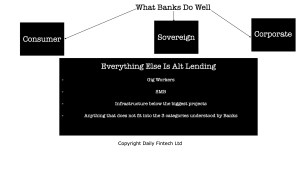The count of captive insurance companies globally is estimated to be over 7000, domiciled in 70+ jurisdictions. Captives have been established by nearly 70% of Fortune 500 companies in the USA. The high captive proliferation among large corporations in advanced markets in now spreading to Asia and Latin America. Globally, 46% of companies are reported to be exploring a new captive. In APAC and Latin America, that share is higher at 57%. These latest trends are being triggered in a commercial insurance market, witnessing rate increases, capacity reductions and tighter underwriting as carriers adapt to pandemic-related and above-average catastrophe losses amid decreasing investment returns.
Consequently, commercial insurance programs are increasing deductibles, retentions and coinsurance to bolster utilization of existing captives and form new captives, with surveys disclosing that more than 50% respondents expect to expand captives by increasing lines and retention in the captive.
In commercial insurance, barring captives, other prevalent ways to transfer risk are retention groups, large deductible plans, catastrophe bonds, weather-based derivatives and collateralized reinsurance. These approaches have been known to take up more than a quarter of the U.S. commercial market.
The Drivers
Captive insurance enables a corporation with a large portfolio of risks to better bundle and diversify them while accessing global (re)insurance markets. By insuring high-frequency, low-severity risks through its captive, an organization curtails transaction costs and can focus risk transfer on lower-frequency, higher-severity risks. Captives have evolved, driven by companies seeking better control over insurance placements and catalyzed by hard market cycles.
Traditionally owned by one company, alternative captive structures that fit the needs of smaller organizations are gaining ground. One structure is of cell captives, where owners of the core facility handle regulatory capital, insurance licenses and day-to-day operations while renting a cell to third-party organizations. This approach makes it possible for small and mid-sized organizations to enter the market, pooling risks into a group captive.
Captives benefit from better access to data and closer proximity to risks of their sponsors, helping them develop customized products covering changing needs. This is significant with new risks and uncertainties, as the risk frequency and severity can be better determined. Advanced data analytics and actuarial development support captives to underwrite hard-to-insure risks such as cyber.
Digitalization Need
The need for captive insurers to maintain a competitive advantage, increase productivity and drive business decisions with analytics and automation, dominate their business strategies as much as for traditional insurers. The need for digitalization in the captive insurance market is expected to significantly grow. Due to the diversity and complexity of captives, there is no one-size-fits-all technical solution. Besides, pricing models of most solutions are suited to traditional insurers but out of reach of captives.
Allianz Global Corporate & Specialty piloted blockchain for captive insurance, aimed at streamlining policies which are generally more complex due to multiple jurisdictions covered. The application successfully targeted three process flows in the captive cycle — policy renewals, premium payments and claims. The benefits that transpired were increased transparency, greater control on transactions and lowered fraud rate.
L&F Distributors, a Texas-based beer wholesaler, created a captive insurance program which it expanded to 38 beer distributors across the country, covering more than 20,000 lives in 20+ states. The plans are advantageous to employees: imaging tests, urgent care visits and ambulatory surgeries are free, if conducted in contracted facilities. The average deductible is much lower than the high deductibles in many employer-sponsored plans. The employers benefit in multiple ways.
Captives are not for the faint of heart; they require an ongoing commitment to risk management and mitigation. In the hardening market, a captive arrangement offers the flexibility to put lines of coverage and the ability to invest money held in surplus and reserves back to the parent organization.
You get 3 free articles on Daily Fintech. After that you will need to become a member for just US$143 a year (= $0.39 per day) and get all our fresh content and our archives and participate in our forum.
Source: https://dailyfintech.com/2021/05/20/alternative-risk-financing-rise-of-the-captives/
- &
- 000
- 39
- 420
- access
- ADvantage
- All
- america
- among
- analytics
- Application
- articles
- asia
- Automation
- beer
- Bonds
- Bundle
- business
- Capacity
- capital
- care
- claims
- closer
- commercial
- Companies
- company
- content
- Corporations
- Costs
- cyber
- data
- Data Analytics
- day
- Derivatives
- develop
- Development
- Diversity
- driven
- employees
- employers
- Expand
- Facility
- fintech
- fit
- Flexibility
- Focus
- form
- fraud
- Free
- fresh
- Global
- Group
- Grow
- High
- HTTPS
- Imaging
- Increase
- insurance
- insurers
- investment
- IT
- large
- latest
- latin america
- licenses
- management
- Market
- Markets
- money
- Offers
- Operations
- Other
- owners
- payments
- policies
- policy
- portfolio
- Premium
- pricing
- productivity
- Products
- Program
- Programs
- RE
- Renewals
- returns
- Risk
- risk management
- Share
- small
- Solutions
- States
- support
- Technical
- tests
- transaction
- Transactions
- Transparency
- Trends
- u.s.
- underwriting
- USA
- year







